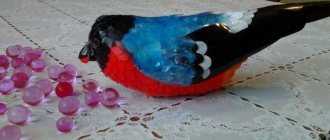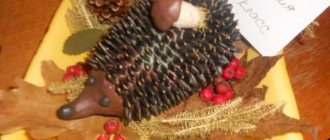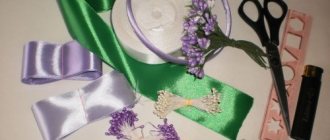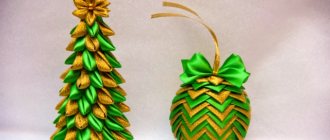Bouquet of physalis for the winter. Recipes from Physalis edible
A wide variety of dishes are prepared from the fruits of physalis; it easily fits into traditional recipes for our cuisine, adding a special piquancy and jelly base to them.
Therefore, there are no special secrets here, only your imagination is required. But there is one important detail in the technology for preparing vegetable physalis - the fruits should be thoroughly “washed” from the sticky oily coating. To do this, pour boiling water over them for 3-5 minutes or blanch for 2-3 minutes. After such hot processing, the vegetable acquires a pleasant taste and can be used to prepare any dishes, as well as eaten fresh. Otherwise, the preparation of vegetable physalis is no different from other vegetables: it is pickled, salted, making an excellent appetizer, even cabbage is fermented with it. Its fruits are stewed, fried and baked with other vegetables; excellent caviar and puree are prepared from it. When boiled, physalis has a sauce-like consistency and a pleasant fresh aroma, so it is perfect for preparing various sauces, improving the taste and structure of other vegetable, including spicy, sauces and ketchup. So, by replacing half the amount of tkemali (unripe plum) in the sauce of the same name, you will get a very fresh and piquant aromatic dish. Physalis also wonderfully complements our vegetable and cereal soups, adds an original note to traditional borscht, and changes the usual taste of pickle and cabbage soup. Try it and you will appreciate how easily and for the better the taste of your usual lunch can change. The fruits of vegetable physalis can also be eaten fresh, added to vegetable salads, and prepared as a “raw” sauce, similar to the famous Mexican Salsa Verdi. By the way, to prepare this hot sauce, they take exactly green, slightly unripe fruits, generously seasoning it with hot pepper. Its sweet varieties are used to make excellent jam, jelly and marmalade. But the fruits of the physalis berry do not require a hot bath; they can be eaten directly from the bush or used to prepare sweet culinary masterpieces: compote, jelly, preserves, jam, puree, marmalade. They make excellent marmalade and marshmallows, amazing jelly sweets and candied fruits. The berries are used in baking pastries and cakes, and as a filling for pies. And if you carefully cut the wrapper and, freeing the berry, dip it in melted chocolate, you will get an original and delicious candy decoration surrounded by golden petals. You can even make liqueur or liqueur from fresh ripe fruits of strawberry physalis.
Physalis – photo
And if you still have little idea of what physalis really looks like in the garden, this selection is especially for you!
Photo: etsy.com
Photo: domashniecvety.ru Photo: tunnel.ru Photo: actaplantarum.org
Photo: mlrd.net Photo: dsnews.ua
Photo: fotokto.ru Photo: pxhere.com Photo: dispatchist.com
Photo: kiberis.ru Photo: fotokto.ru
Photo: agroklub.com
Photo: agrotehnika36.ru Photo: budgetstories.ru
Photo: youtube.com
Photo: nazya.com Photo: 1bizibord.ru
Photo: cherdacha.ru Photo: proroslo.ru Photo: tunnel.ru
Photo: botanichka.ru
Photo: joinfo.com Photo: flickr.com
Photo: peperonciniperhobby.it
Photo: cpgdaily.com
Did you like the post? Subscribe to our channel in Yandex.Zen, it really helps us in our development!
How to make a bouquet of physalis.
Here is the physalis in the photo. Of course everyone saw him. It always comes back into fashion from time to time because it is a dried flower. These bright orange lanterns will remain there until spring. But such a simple bouquet, as we see in the photograph, is far from the limit of the decorative value of physalis.
For example, what a wondrous beauty! Bright autumn wreath made of physalis.
The plant is very beneficial for decorative purposes. It is enough to dry the branches you like with lanterns in a vertical position. You can tear off the lanterns and dry them separately. They dry without problems; as soon as they ripen, they are practically dry on their own. The flashlights are thin, but quite strong, and can be stored for a long time, a year or two or more. If you add other suitable decorative materials, such as sisal, to physalis, you can create very interesting compositions. By adding physalis to ready-made bouquets, you get a wonderful opportunity to refresh them and add bright autumn colors.
Dried flowers are often used in scrapbooking, appliques, and the design of topiaries and figurines.
A festive garland of physalis flowers looks impressive. Just remember that you can only use LED bulbs for this purpose, which do not heat up. Dry, paper-thin physalis boxes are very flammable. To make such a garland, you need to cut out the stalk with small scissors and remove the berry from the box. Make the hole as small as possible so that later the resulting caps do not fall off the garland. Place the caps on the lamps of the finished purchased LED garland.
How to make little gnomes from physalis fruits.
- dried physalis flowers,
- wood beads,
- felt or fleece,
- ribbons and some threads that will be hair
- acrylic paints or indelible thin market,
- scissors,
- glue gun or wood glue.
The bead will be the head of the gnome. The physalis lantern itself is the body. We will make a collar and cap from felt.
Cut out a circle from fleece - the future collar. Cut eight petals around the perimeter of the circle.
From a fabric of a different color, cut out a triangle with two sides of 7 cm each - this will be a man’s hat. We roll the triangle into a cone and fasten a ribbon loop inside. Pull the loop itself outward, and secure the knot inside well with glue. We connect the sides of the cone and sew (or glue). Focus on the size of the bead.
Draw a gnome's face on the ball. Use a brush and acrylic paints or markers to define individual facial features. Now glue the yarn hair. Glue the finished cap with a loop for hanging to your hair.
Craft: glowing garland of Physalis lantern flower
The pods of the Physalis lantern flower look like little lanterns themselves and are ideal for creating a garland craft . They can be used to quickly make a magical glowing chain of small lights-lamps with your own hands.
You will need an LED garland and nail scissors. Using scissors, we cut a hole in the lantern flower and then insert the resulting bowl into the garland. A spectacular set for decorating a wall with natural materials in autumn style, ready.
My Beautiful Home
My Beautiful Home
My beautiful home
Bouquet of rowan. Now I definitely bring rowan fruits from the dacha. Incredibly beautiful result
Beauty autumn has already entered her domain. The changeable weather has long been noticeable; it began to drizzle. A lot of yellow, red, burgundy, orange and even purple palettes appeared. If you want to create a cozy mood at home, then why not let the autumn colors into your apartment door? After all, you can easily make autumn compositions from foliage, rowan berries and other fruits. Rowan is an ideal material for autumn creativity, which can warm the soul with its bright colors even in severe frosts. Therefore, today we want to present to you a selection of 21 bright compositions using the gifts of autumn.
Compositions from autumn materials
Multi-layer wreath with dry lavender, greenery, apples and decorative pumpkins
A bouquet without flowers - from pine cones and more. Yes, imagine, this happens, isn’t it, it’s just magic.
Simple compositions from rowan fruits are a decoration not only for the garden, but also for the home.
A candlestick made from natural materials will add a special romantic mood and comfort.
An extraordinary approach to decorating your home and creating an autumn composition. Let's take note.
An amazing riot of colors!
A couple more original ideas for a wreath on the door!
You don't have to be a florist to create compositional masterpieces. The main thing is to show your imagination!
Pumpkin is an ideal fruit for creating autumn bouquets.
If you are not in the mood to make something, but the desire for a drop of autumn to appear at home exists, take a walk along the street and simply collect the gifts of nature. Pick a couple of autumn leaves, a branch of rosehip, rowan, look for sea buckthorn, pick flowers, collect it all in a huge bouquet, put it in a vase and enjoy the autumn still life.
Source
Plant care
Of course, watering is needed. Physalis is watered so that a soil crust does not form on the ground, but there are no puddles.
It is necessary to tie some varieties of physalis. Especially tall and large-fruited, since the stems are curly and weak, it is difficult for them to withstand heavy fruits.
A loosening and weeding procedure is also necessary. Seedlings need to be fertilized 2 times. When the plants grow, they need to be fed more often, every 2 weeks. It is produced with special fertilizers. For example, “Epin”, “Flower” and others.
Bouquet for the winter from physalis. Decorative physalis
Decorative physalis is an unpretentious perennial with an elongated stem completely covered with bright orange “lanterns”.
This plant also has edible relatives: vegetable and dessert varieties. The vegetable variety is canned instead of tomatoes in lean years. And the fruits of strawberry physalis are used for compotes and jams.
Ornamental physalis has many other names - field cherry, Jewish cherry, winter cherry, Chinese lantern. And the eternal romantics of the French dubbed this plant L'amour en cage - “love in a cage.”
And for good reason: if the orange box of physalis falls into water or under heavy rain, it loses its protective layer, and only a weightless openwork “skeleton” remains - a cage in which a small fruit of a rich red color rolls around.
A juicy allegory suggests itself: love, enclosed in a light “silver cage”.
This type of physalis requires the most standard care: watering and periodic removal of weeds. Colorado beetles do not bother him at all, although he belongs to the same family as potatoes, tomatoes and eggplants.
But the main charm of this culture lies in its decorativeness. When dry, the lanterns do not lose their amazing brightness all winter long. A winter bouquet of decorative physalis does not even need additional decoration with other dried flowers.
Or you can cut off shoots with partially ripened bolls, and then you will have green, red and orange lanterns hanging on each branch. If you carefully cut the flashlight with nail scissors and open it, you will get cute little and durable “flowers”.
To make the leaves of the box transparent, you can resort to the so-called skeletonization - a term familiar to every florist.
To do this, lanterns are dipped in a boiling soda solution (two tablespoons of the substance per half liter of water) and cooked over low heat for 30 minutes.
Then each lantern is opened along the venation lines and a small tomato fruit is removed. After this, using light tapping with a soft brush, carefully remove the remaining bright skin, periodically rinsing with water. As a result, you will be left with only a web of tiny veins.
It is also recommended to place the bare flashlights on a sheet of white paper, on which all flaws in the cleaning will be clearly visible, and in the same way remove all remnants of the red film.
Next, all you have to do is dry the handmade products, placing them between several layers of paper and placing them under a press. Such blanks will add zest to any flower arrangement, especially if you make their color more expressive with the help of aerosol paints.
Chestnut turtle
Using a lot of chestnuts and an ordinary cake box, you can build a large original turtle. For this you will need:
- chestnuts (about 80 pieces);
- thin wire;
- a plastic lid from a cake box with a diameter of approximately 20 cm;
- scotch;
- plasticine;
- awl;
- plastic bottle cap;
- a small paper umbrella (can be used as a decoration for a buffet table);
- flower bud (real or artificial);
- a piece of packing tape.
Physalis decorative bouquet. We use Physalis to the fullest extent
Ornamental physalis, often called “Chinese lanterns,” is a very bright and beautiful plant. Its main characteristic feature is the presence of a “flashlight” in which the berry is enclosed. Bright red-orange lanterns are visible from afar. The bush has a decorative appearance, and the branches are often used to make “winter” bouquets.
Features of the plant
The berries of the decorative physalis are not edible. They taste bitter and are literally good for nothing. The plant is a perennial, reaching a height of 60 cm. It belongs to the nightshade family like tomatoes, eggplants and potatoes. The decorative category includes Physalis Common and Physalis Garden.
Edible types of physalis: Peruvian, strawberry, Mexican. They are very heat-loving, and it is recommended to grow them in seedlings. Plants are not decorative; you should plant them only if you need fruits.
How to dry physalis and make a bouquet out of it
When all the lanterns are uniformly red, cut off the branches you like. Tear off the leaves. If you want to have a bouquet with drooping branches, you can dry it directly in a vase. If you want the lanterns to point upward, hang the branches upside down and tie them to a straight stick. This way the branches will straighten and take the position you want. The bouquets are beautiful in both forms. A good addition would be dried tansy, cotton (can be bought at a flower shop), dry branches, ears of corn, haretail, Echinops and other dried flowers.
Physalis is a very decorative plant, products from which look organically in a country interior.
What else can be made from physalis
Also, physalis is used to make decorative wreaths and children's crafts. Lanterns can be torn from branches with cuttings and tied with thread. You will get a natural garland. If you pierce the lanterns with a needle and place them on a thread close to each other, you will get beads. Physalis is very actively used in floristry and decoration.
Atmospheric table decoration with a lantern flower
After we have clarified the important difference between physalis and other varieties, we can safely move on to autumn decoration. And this can be done in different ways using a lantern flower. Although the plant has no place in drinks and dishes, small orange and red lanterns are ideal as seasonal table decorations. You can use the plant either fresh or dried and combine it with other fall flowers such as chrysanthemums, asters and marigolds. Of course, fresh seasonal fruits, such as small pears and apples, as well as all types of rose hips and wild berries, are suitable for such compositions.
My Beautiful Home
My Beautiful Home
Physalis looks great on the table not only as a whole stem, but also in the form of individual pods. You can distribute them on plates or decorate napkins, dishes, vases and other table serving items. Allow yourself to be creative and your own exclusiveness will appear in all its glory!
How to dry physalis for a bouquet. Physalis decorative in landscape design
Ornamental physalis is grown by gardeners not for the fruits - they are inedible, and not for the flowers, because they are very small and inconspicuous. This plant attracts with its bright orange lantern-shaped fruits. Lanterns are especially delightful against the backdrop of the gray and white monochromatic Russian winter, decorating empty gardens and dacha areas with their own lights. Popularly, this plant has many names:
- Chinese lanterns;
- earth cranberry;
- emerald berry;
- winter cherry.
Physalis has the specificity of storing its own fruit simultaneously with the calyx for many months. If you leave the fruits untouched on the bushes, then by spring a beautiful cup will emerge, woven from veins with a bright berry in the middle. On one bush there can be up to 15 lantern fruits.
In landscape design, 2 types of decorative physalis are used:
- Physalis ordinary is a perennial bush 30-60 cm high with fruit cups 3-4 cm in diameter.
- Physalis Franchet - grows up to 70-90 cm. Its red capsule fruits have a diameter of 8-9 cm. It is grown as an annual.
Decorative physalis is beautiful in a composition with other flowers in a light palette on the lawn or in a mixed flower garden. Combining physalis with lunaria, immortelle, gypsophila or kermek changes the entire area, making it elegant.
Its dried branches with lanterns in bouquets of dried flowers, garlands, appliques, form a festive mood in one of the parts of the house, both from the outside and in the middle, decorating the door, window, balcony.
Craft: Autumn fairies made of felt and physalis
My Beautiful Home
To make the “Fairy” craft, you will need the following materials: flesh-colored felt, green and white wool, Chinese lantern flowers, wire, toothpick, needle and universal glue.
How to make fairies:
roll a ball of felt - this will be the fairy's head, add a little white fluffy wool - hair. Make a small roll of light green wool and a toothpick by simply wrapping the wool around this small bar - arms and neck. First place the crossbar on the wire, then the head, leaving the end of the wire for the physalis dress. Secure all the “spare parts” with glue or a needle.
We free the lantern flower from the fruit, leaving only the airy part, which we then string on a wire and also secure with glue. All that remains is to decorate your hair with flower petals (any). The craft is ready.
Wonderful atmospheric autumn fairies will lift your spirits with their delicate appearance and bright, orange attire.
How to make a bouquet of physalis. Physalis from candies
How to make a bouquet of Physalis candies
Website HOBBIN HOUSE Handicraft Workshop.
In this master class, I will show you how to make a bouquet of Physalis sweets. Quite unusual and it doesn’t even seem like a flower at all. But physalis is great for candy bouquets; it is very decorative, although not too rustic.
To make this “flower” we will need: Ferrero Rocher candies, silver, blue and orange corrugated paper with a transition, thin wire, wooden skewers for kebabs, blue organza, glue gun.
Let's take our candies, we will need 15 pieces for the bouquet. So, you can safely gobble one up.
We take the corrugation and cut off a piece from it approximately 15 cm wide and 2.5 divisions high, this is also approximately 15 - 17 cm. Fold the paper into 5 equal parts.
We cut out these petals and twist the ends.
We bend the centers of the petals, screw the petals to the skewer. Glue a candy in the middle. If we do it this way, we get a physalis with 5 petals, it looks quite nice. But I liked the option with 6 petals more, although in the original there are 4 petals. Well, okay, let's start with 6 petals.
Master class 2. Topiary made of artificial flowers
Topiary made of artificial flowers can become a permanent decoration of the dining table, display cabinet, coffee table, or mantelpiece. Moreover, in most cases it is better to make two identical trees at once to create a feeling of symmetry in the interior. And topiary made from artificial flowers is a great idea for a gift or wedding decoration.
- 2 pcs. artificial hydrangeas or several other flowers;
- Base ball with a diameter of 10 cm;
- Acrylic paint to match the colors (for painting the ball);
- Foam brush-roller;
- Clay pot;
- Trunk (this project uses a trunk and a pot from a factory topiary);
- Cotton ribbon in contrasting colors;
- Glue gun;
- Stationery knife or awl;
- Side cutter or wire cutters for cutting the wire base of flowers.
Step 1. First paint the ball with paint to match the colors and leave it to dry.
Step 2: While the ball is drying, separate the flowers from the “stems.”
- If your flower has wire “stems,” then leave tails about 2 cm long from them. Use a side cutter or wire cutters for cutting.
- If the flowers don’t have wire, it doesn’t matter. Cut off the “stems” at the root so that you can simply glue the flowers on later.
Step 3. Mark on the ball the place where the trunk will be attached and begin gluing flowers, maintaining an equal interval between them. It is desirable that the petals overlap each other so that the ball under them is practically invisible. Leave the area near the place where the trunk is attached without flowers.
- Attach the flowers on the wire to the ball in the following sequence: creating a hole for the “stem” - filling the hole with a drop of glue - planting the flower all the way (see photo below).
In this master class, the flowers were distributed in a checkerboard pattern with an interval of approximately 2.5 cm.
Step 4. Make a hole in the ball for the trunk with an awl/knife, fill it with glue and attach the topiary according to the recommendations of Step No. 4 of our Basic Instructions. Next, glue one or several leaves at once to the base of the crown as shown in the photo below. In our master class, the hydrangea leaf was additionally fixed in the desired position with a pin.
After this, decorate the empty area near the trunk with flowers.
Step 5. Place the topiary in some kind of fixative mixture and decorate the “soil” (see Step 5 and Step 6 of the Basic Instructions). The final touch is a bow made of a wide cotton ribbon, tied on the trunk just under the crown.
Below are ideas for decorating a topiary with artificial flowers, which you can implement with the help of our master class.
Fruit bouquet with flowers
The main decorative element of fruit bouquets can be fresh or artificial flowers, as well as homemade flowers made from corrugated paper, often used for candy bouquets.
A large number of flowers in a fruit bouquet is not recommended, because its main components are delicious aromatic fruits, which are the main focus. If you decide to place flowers in a bouquet, they must be attached to the foam using a stable stem.
Recommendations for creating fruit bouquets
Specialists who are directly involved in creating custom-made fruit bouquets recommend taking into account the following points when creating such a bouquet yourself:
- All products should be as fresh as possible without damage on the outside, and the greens should be rich, in no case dull or withering;
- Before making a bouquet, all fruits are thoroughly washed under running water and then completely dried. Clean and externally dry fruits can be attached to a bouquet;
- It is better to cut fruits and cut them into different parts with sharp and shaped knives, but it is important to remember that apples and pears, which immediately become aerated when air hits the surface, should be served in a bouquet only whole.
- The parts of the fruit that have been cut need to be covered with a thin layer of cling film. It is not very noticeable, but protects the cut surface of the fruit from weathering and tarnishing when exposed to open air.
A very interesting and effective technique for creating a fruit bouquet is to inject a small amount of high-quality alcoholic beverages into citrus fruits using a syringe. In this way, citrus fruits can be made more aromatic and their shelf life extended. But such bouquets are strictly intended for persons over 18 years of age!
Which decorative dried flowers to choose?
There are many plants that are suitable for making bouquets of dried flowers. We will tell you only about the most popular and spectacular representatives.
Gypsophila paniculata
Gypsophila paniculata Flamingo
This decorative spherical bush (up to 80 cm high) with small flowers (about 1 cm in diameter) creates an excellent background for other accent flowers. The varieties with white and pink inflorescences are especially popular: Snezhinka, White Holiday, Pink Star, Flamingo, etc.
Kermek (Limonium)
These paniculate inflorescences with miniature flowers are also suitable for creating a background in a flower bed and edging bouquets. The color of decorative flowers can be yellow, pink, lilac, violet. Such a wide selection of shades allows you to create a flower garden and bouquet for every taste.
Yarrow (Achillea)
This is not only a healing plant, but also an excellent dried flower for home decor. Decorative yarrows come in all sorts of colors. Depending on the type and variety, they are used as a background or accent plant.
Celosia
Particularly popular are silvery comb celosia (popularly called cockscomb), silvery pinnate and spicata. Their unusual, brightly colored inflorescences (red, purple, orange, yellow) last until the first frost and look great as cut flowers.
Hydrangea (Hydrangea)
These lush paniculate and spherical inflorescences leave no one indifferent. Of course, during flowering, hydrangea looks more impressive than in late autumn. But brown dry inflorescences can also add charm to your flower garden and winter bouquets.
Acroclinum, or helipterum (Helipterum)
Most often, annual Helipterum species are grown in gardens, since these plants are especially attractive as dried flowers. They have inflorescences-baskets, consisting of small flowers, wrapped in petal-shaped scales of silver, white, yellow or pink color. They give these sunny flowers a special charm.
Gomphrena
Currently, spherical gomphrena is especially popular, in particular its dwarf varieties (up to 15 cm in height). These compact annual plants have small flowers with bracts of pink, white, beige, and purple colors. The spherical flowers resemble clover in appearance. They do not fade from July until the first frost.
Eryngium (Eryngium)
These blue flowers with their charming spiky leaves make a great accent to a flower bed and add a unique look to winter bouquets. Tall varieties look good in group and solitary plantings, while low-growing varieties look good in ridges, rock gardens and mixborders.
Physalis
Physalis is a favorite plant of florists. With its help you can easily add bright colors to any bouquet. Unusual orange “lanterns” need to be cut before the fruits are fully ripened, then the dried flowers will retain their attractive appearance for a longer time.
Echinacea purpurea
In the fall, after flowering has ended, attractive “cones” remain on the strong stems of Echinacea - the cores of the flowers, in which the seeds are located. They perfectly decorate the garden in winter.
Berry bouquet
A berry bouquet is made by stringing several different berries onto skewers. For this master class you will need: a lot of wooden skewers, large strawberries, dense grapes, pineapple pieces, lush cabbage leaves:
- The berries are strung one by one or in any order you like onto long skewers;
- The highlight of this berry bouquet is the presence of pineapple pieces, which are also strung on sticks;
- Skewers with strung berries and pineapple are fastened to the base with tape and placed in a small vase or wicker oblong basket, from which curly lettuce leaves can also be seen, masking the appearance of wooden skewers.
A berry bouquet is a unique bouquet that is most relevant in the summer.
Physalis will turn your home into a fairy tale!
When the green pericarps of the physalis turn orange in the fall, the garden is amazingly transformed. The bright boxes stand out so much against the background of other plants!
There is a beautiful legend about physalis . One day, a terrible dragon swallowed the sun, eternal darkness came, and all living things began to die. But there was a daredevil who wanted to defeat the dragon and return the sun to the world. To find the monster in the dark, he took a flashlight with him.
Why are fruit bouquets so unique?
The uniqueness of any fruit bouquet is that you can choose a combination of fruits and elements of its decor, based on the taste preferences of the person to whom it will be given.
In addition to whole fruits, you can add other products to the bouquet: nuts, sweets, dried fruits, chocolate, sausages, cheeses. Red chili peppers add a special flavor to edible bouquets:
- A fruit bouquet with the addition of dried fruits, nuts and protein bars will be appreciated by adherents of proper nutrition and a healthy lifestyle.
- A citrus bouquet with aromatic oranges, tangerines, grapefruits and limes will be appreciated by those who often suffer from colds due to weakened immunity, and the substances contained in citruses will help to slightly strengthen the body's protective functions.
- A bouquet of fruits with the addition of a bottle of alcohol, red pepper, sausages and braided cheese will appeal to a man who loves hanging out with his friends in bars and watching sports games.
There are many options for product combinations. It is only important to accurately fall into the preferences of the person to whom such a bouquet will be intended as a gift.











